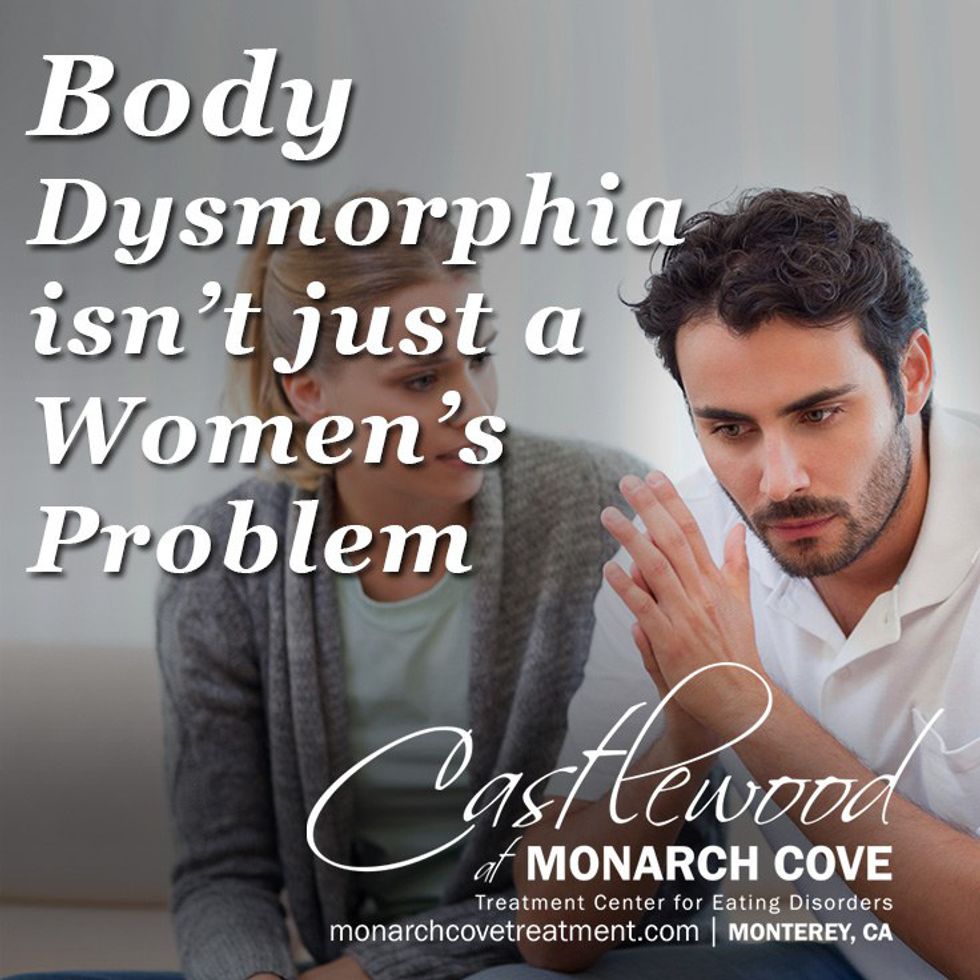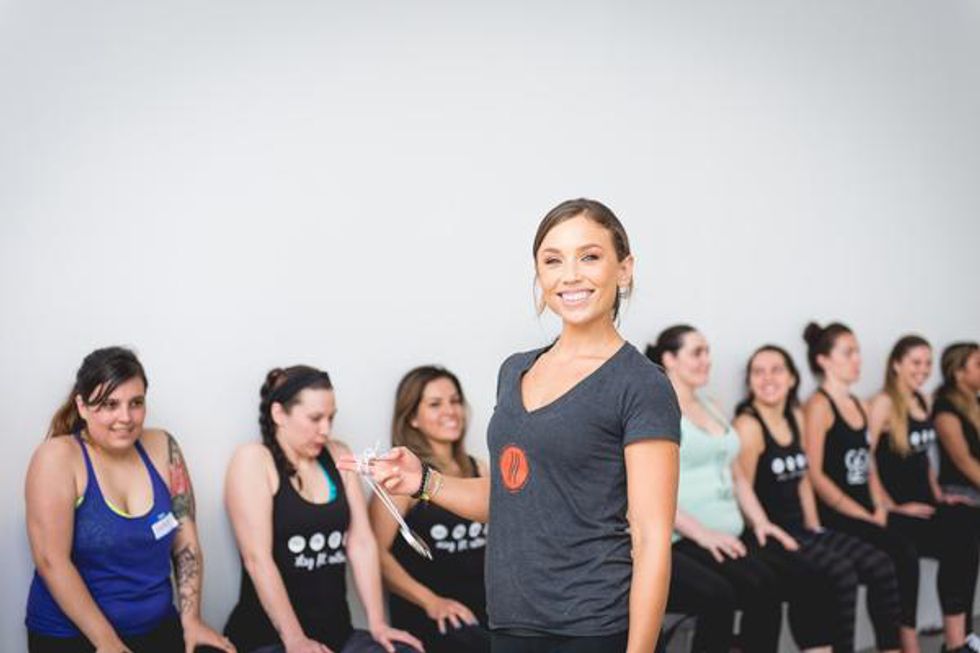I have one foot out the door of the gym, and I am not doing squat-jumps over the threshold. Admittedly, I am a half-hearted exerciser disguised as an enthusiast. It’s weighing on my mind (no pun intended), because I recently started a job as a receptionist at a local gym. How can I feel lethargic about my own gym patronage, yet still show up as a member and an employee? Am I a fraud? Perhaps my perceived cultural enthusiasm for exercise, healthy lifestyle, barre, triathlons, cross fit, and body building (or whatever trend you like) is being exaggerated by the selective presentation social media users can achieve. If 68.8% of Americans over 20-years-old are found to be overweight (according to the National Institute of Diabetes and Digestive and Kidney Disease in 2012), then perhaps more individuals feel like me, but we’re just less visible on social media.
My relationship with athleticism seemed doomed from the start. I quit pee-wee soccer. After falling off a balance beam as a preteen, I quit gymnastics. I was shucked into cheerleading when my little brother started in-town football, and I couldn’t fit in socially. Surprise! I split (figuratively). In high school gym class, teen angst and self-consciousness led me to imitate Daria during volleyball. Until my twenties, I was an all-out health un-enthusiast.
I changed my ‘tude after completing my undergrad (reminder: grad student). I started working as a receptionist at a gym way-back-when in 2010, made friends with a personal trainer and worked out regularly. For the first time, fear of failure eased. Though I moved on to other employment, I have had an on-and-off relationship with exercise ever since. My weight has fluctuated, sometimes drastically, and I have run the gamut from satisfaction to misery over my physical appearance. I can’t tout any tenacious message of, “LOVE YOURSELF, LOVE YOUR BODY!”. I’m just getting by, guys. I’m rarely excited driving to the gym, but I feel better afterwards, and manage to get there two to four times a week (maybe zero times during finals).
Could my lukewarm feelings be well-founded? Putting aside the innumerable benefits of safe dieting and healthy amounts of exercise, it is possible for fitness to become destructive in extreme circumstances. A psychological study asked men to compare their body to photos of different male physiques, and findings were that men with muscle dysmorphia (an exaggerated preoccupation with one’s perceived insufficient muscle mass) inaccurately chose photos of lean or sickly men as most closely representing their own image (Danilova, Diekhoff & Vandehey, 2013). In other words, men dealing with muscle dysmorphia showed that they falsely underestimated their own image, even when their BMI and weight were actually healthy, and interpreted themselves far from the “ideal” male physique. Body Dysmorphic Disorder (BDD) is more commonly known, and includes symptoms of preoccupation and dissatisfaction with the appearance of at least one particular body part which is not truly deformed or unnoticeably imperfect to others. This disorder effects both genders, though official diagnoses are slightly higher in women (American Psychological Association). It is easy to imagine how distressing these disorders can become for individuals.
caption: PSA from Monarch Cove Eating Disorder Treatment Center, located in Pacific Grove, CA
A scan of social media reveals a lot of “gym” culture in photo apps like Instagram: health supplement businesses like Shredz, food accounts like @Organicandhappy, and a variety of web-administered training programs from personal trainers like Tana Ashlee. An increasing number of men and women have committed to vigorous health and fitness lifestyles, judging from pictures, hashtags and likes. The category #transformationtuesday frequently depicts before and after photos of physical transformation, including those of drastic weight loss or dramatic muscle gain. Nonetheless, a nagging skepticism leads me to wonder if the up-tick in amazingly toned bods may be more of an optical illusion; a fun-house mirror effect that shows bis and tris on our IG instead of shrunken hands and googley eyes.
To be sure, a majority of fitness enthusiasts achieve unbelievable physiques while remaining happy and healthy. Many bodybuilding competitions promote “natural” bodybuilding and steroids became illegal in the U.S. under The Anabolic Steroid Control Act of 1990. The National Physique Committee (NPC) holds the NPC NewEngland Championship body building competition in Boston, coming up on October 29, in case you’re interested. In fact, competitions can be found around the U.S. almost year-round. Want help deciphering all of the acronyms in the profile of your favorite bikini model or fitness competitor? Ready? To name a few, there is AAU (Amateur Athletic Union), ABA (Amateur Bodybuilding Association), IFBB (International Federation of Bodybuilders), (North American Bodybuilding Association), NPC (National Physique Committee) WFF (World Figure Federation), and WNFB (World Natural Bodybuilding Association); for more visit Ron Avidian’s list, “Misc. Term Bodybuilding & Fitness”.
Furthermore, and for the rest of us non-bodybuilders, there are movements for body acceptance breaking from the binary of “fit” vs “unfit”. Among women, the term #fitthick has caught momentum. Websites like Fit&Thick (http://www.getfitandthick.com/pages/what-is-fit-and-thick) depict a muscular and curvy female figure, offering meal plans and workout suggestions. Though labelled as a “plus sized model” Ashley Graham has taken all forums by storm (even a Joe Jonas music video) and was featured as the cover model of the 2016 Sports Illustrated Swimsuit edition. However, the virtues of “fit thick” might become somewhat precarious when factoring the Fit Thick Army, with appointed leader Brittany Renner, who maintains a somewhat exaggerated version of the figure that is likely out of reach to the casual exerciser. Men are not excluded, and according to Men’s Fitness magazine Bodyweight Training is catching on among men, using an alternatively functional fitness program when compared to the traditional Schwarzenegger-esque iron pump (Ling, 2016). Internalizing any one “fit” lifestyle or body type is unwise, but perhaps this varied IG landscape of forms is helpful in revealing #bodygoals other than Barbie and Ken.
caption: Fit & Thick creator Nicole Mejia leading a workout
In the end, fitness’ use for good or harm depends entirely on the user. Perhaps you enjoy your #riseandgrind at 4 in the morning. Good for you. Most important is to keep in mind that the content, photos and statements chosen by IG users give only an orchestrated peek into their lives. No one is in beast mode 24/7. People are complex, and for every sweat-gleaming, chiseled fitness pic I scroll by, I like to imagine those people standing in line at the DMV, slipping on a banana peel, lazing around without makeup, simply looking not-so-perfect. I acknowledge that anything that is moving Americans toward a healthier lifestyle shouldn’t be ignored. Whether every “Squat Challenge” should be taken as a realistic call to action, is another matter.





















